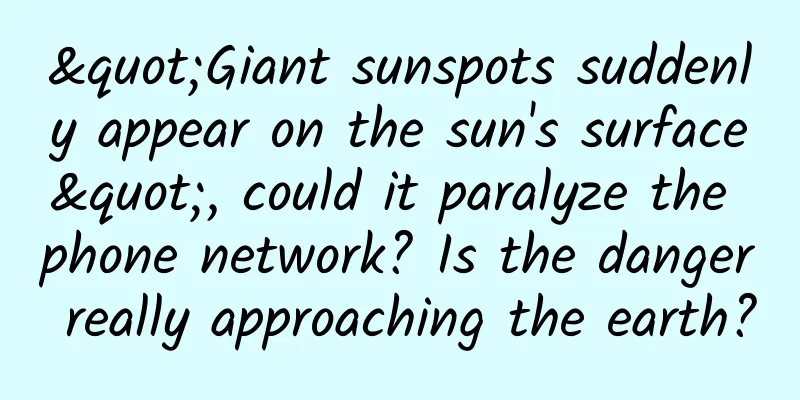"UFO"? Don't be afraid, it's a weather balloon!

|
Maybe one day when you are walking on the road and look up, you see a white ball slowly floating in the sky... Don't be nervous or afraid, this is not an "UFO" but our weather sounding balloon! Sounding balloons, the "doctors" in the sky "Weather sounding balloons" are often mistaken for "unidentified flying objects", but meteorological workers affectionately name them "Dabai" and "brave and fearless high-altitude explorer" is also the highest evaluation of it. In order to detect the temperature, humidity, air pressure, wind direction, wind speed, etc. of the atmosphere, people often conduct high-altitude meteorological observations. High-altitude meteorological observations mainly measure the temperature, humidity, air pressure, wind direction, wind speed at various altitudes of the atmosphere, and there are also some other special items, such as atmospheric composition, ozone, radiation, gas and electricity, etc. So, what are the main means of high-altitude meteorological observation? They mainly include satellite occultation, aircraft-borne, ground-based remote sensing, rocket sounding and balloon sounding, etc., and only balloon sounding can rise to high altitudes to "take the pulse" of the meteorological environment in a direct contact manner, and can be called the "doctor" of high-altitude meteorological detection. The "diagnostic data" obtained by it is usually considered to be relatively accurate and is often used for authenticity verification and calibration verification of atmospheric remote sensing observations. How to use sounding balloons? When working, the ground radar uses real-time tracking of the sounding balloon to realize the wind measurement function. The sounding balloon carries the sonde into the air. As the balloon rises, the ground radar sends out an inquiry signal, and the sonde transponder sends out a reply signal in response. According to the time interval between each pair of inquiry and reply signals and the direction of the signals, the position of the sounding balloon at each moment can be determined, that is, its straight-line distance from the ground radar, azimuth, and elevation. Then, according to the drift of the sounding balloon with the wind, the wind direction and wind speed can be calculated. At the same time, the sonde will continuously send the collected temperature, humidity and air pressure data at different altitudes back to the ground, which will be received by the ground data receiving radar. The received signals will be decoded and transmitted to the computer terminal for display and drawing, thus completing the detection of high-altitude temperature, humidity, air pressure, wind direction and wind speed. Meteorological sounding balloons are an important means of controlling the changing weather conditions at high altitudes. Like a CT scanner, they scan layer by layer from the ground to high altitudes, achieving observations from two-dimensional to three-dimensional, providing rich high-altitude meteorological data for weather forecasts and promoting the improvement of forecast levels. Produced by Guangdong Science and Technology Newspaper Media Center Gatekeeper expert | Guo Zeyong, senior engineer of Yangjiang Meteorological Bureau, Guangdong Province Editor | Tuo Yan |
Recommend
Popular Science Let Me Tell You丨Who Determines the Direction of a Typhoon?
Spread scientific ideas and promote scientific sp...
5 Lessons a 19-Year-Old Programmer Learned at Google
As a naive, enthusiastic 19-year-old, I walked in...
How did Meilishuo attract its first 1 million users?
Meilishuo was founded in 2009 and now has nearly 1...
6 analysis methods to teach you how to quickly diagnose SEM account performance
Only data can tell whether your promotion account...
4 steps to quickly increase your conversion rate!
First of all, what is the growth we want to talk ...
4 Steps to Create a User Activation Closed Loop
The Internet’s demographic dividend is slowly dis...
Saving 16GB of small memory: Understanding Apple's new file system APFS
APFS is Apple File System, which was launched at ...
Apple, which has deep roots in China, will be hit hard by Trump's WeChat ban
Beijing time, August 10 morning news, because Ten...
How to do KOL marketing promotion? 4000 words of dry goods presented
With the rise of short video platforms such as Ti...
Where does blood come from and where does it go?
"The heart pushes blood to circulate through...
Copywriting methodology: 1 theme, 3 routines, 5 types and 4 psychological cognitions
Sometimes I wonder what the essence of copywritin...
The image of the red-crowned crane has collapsed? The fairy-like and beautiful crane is actually bald?
What? The image of the red-crowned crane has coll...
Product promotion from 0 to 1: How to acquire seed users?
Today we will introduce in detail how to write co...
No idea for APP promotion? One map helps you get all channels! (Super complete)
Everyone working in the Internet industry knows t...
For an introductory tutorial on Tik Tok live streaming, click here!
In my opinion, 2020 is still the best time to ent...









